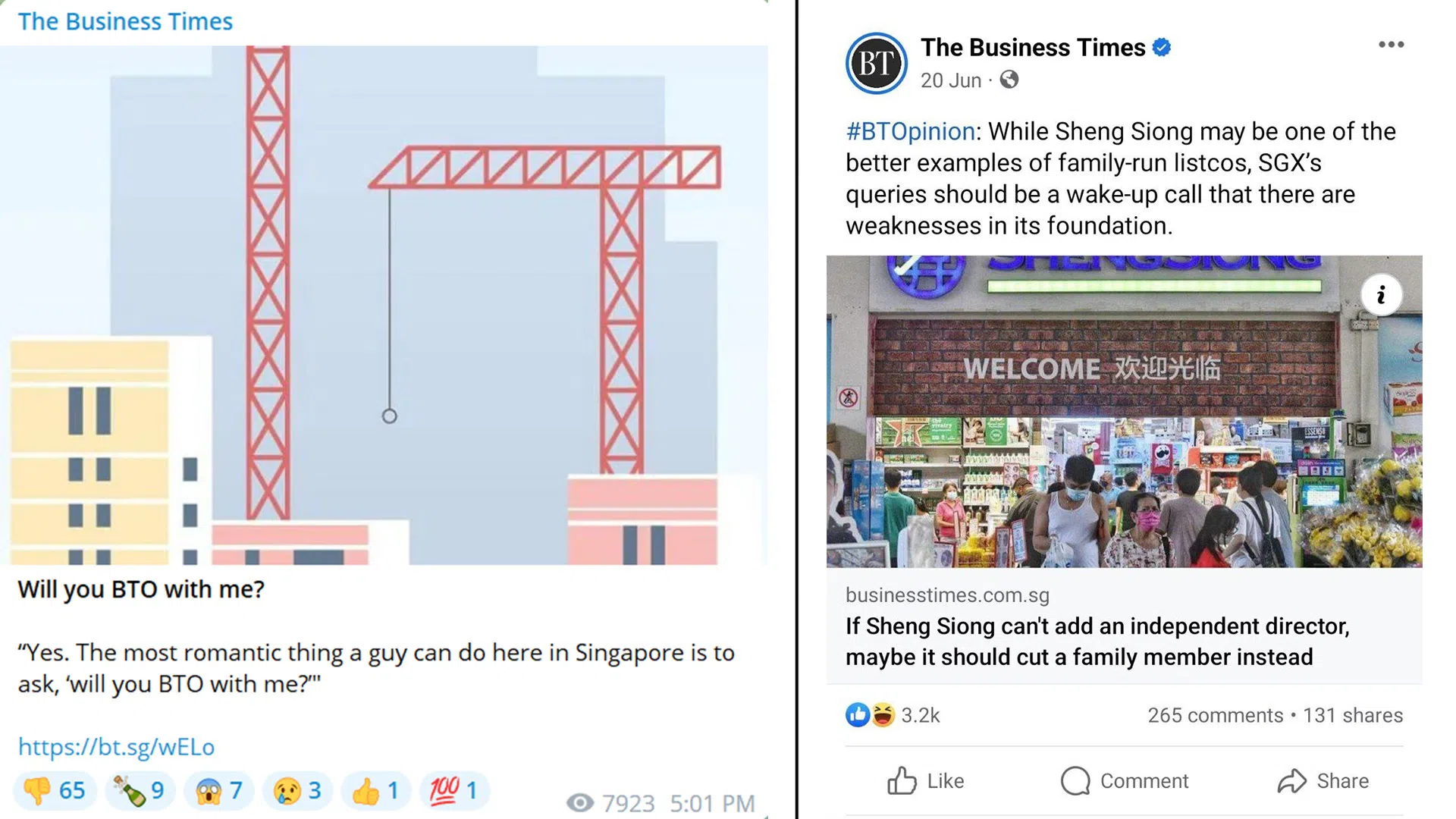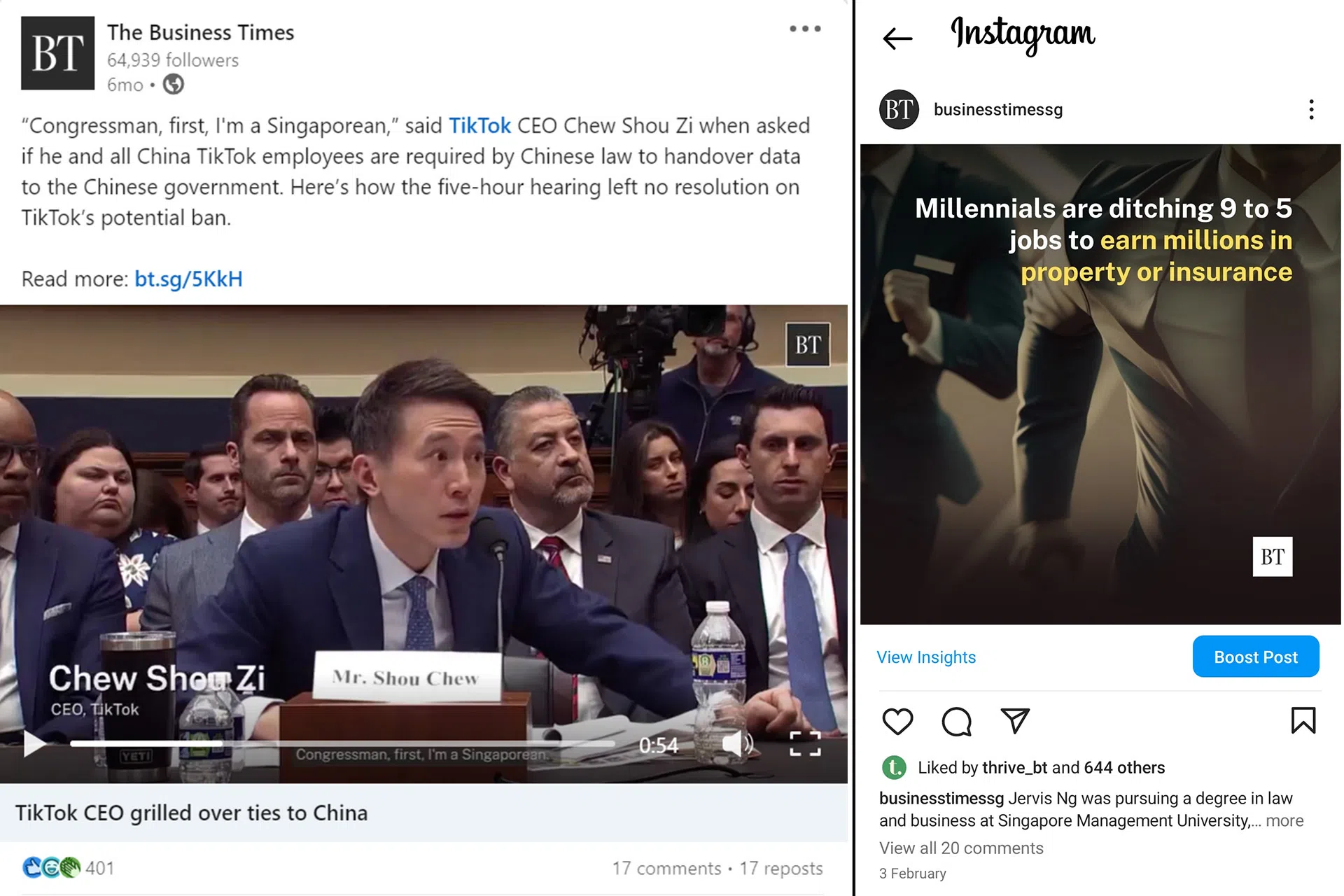Is Facebook dying? Is my job as a social media editor doomed too?
Alvina Soh Yijing
“FACEBOOK is dying, X (formerly Twitter) is imploding, and Instagram is losing its cool,” a colleague of mine said one day.
I don’t believe she meant to add to my anxiety; but as The Business Times’ social media editor, I can’t help but worry that my career is on a similar trajectory.
Social media has been shrinking as a source of news, mainly due to Facebook’s global pullback from news.
Facebook News will end in the United Kingdom, France and Germany from December this year.
Facebook owner Meta, along with its Big Tech peers, is under pressure from lawmakers globally to pay publishers for content. This, combined with new measures designed to fine Big Tech for spreading misinformation, is prompting Big Tech’s retreat from news.
In my experience, however, social media is far from dead; and many are still using such platforms to discover news.
One needs only to glance at the statistics from BT’s recent Presidential Election (PE) coverage to see the truth in what I’m saying. Facebook engagement had a 30 per cent spike over the PE campaign period.

It isn’t just major events driving social media engagement. A recent commentary suggesting that supermarket operator Sheng Siong Holdings cut a family member from its board and BT’s coverage of the court trial of oil tycoon Lim Oon Kuin both drew thousands of eyeballs on its social-media platforms.
What does the future hold?
Besides being distribution channels, social media has always been important to publishers in audience development efforts. We use it to spread the awareness of BT’s journalism, nurture anonymous readers, keep them engaged and hopefully convert them to subscribers over time.
SEE ALSO
As news gets increasingly deprioritised on platforms such as Facebook, the social media team has to work harder.
We have to be where the audiences are, stay attuned to best practices, and understand which formats of content work well on each platform in order to jump on the latest trends and stay relevant.
Our other social media platforms – Instagram, LinkedIn and Telegram – have been growing steadily in the past year.
BT’s Instagram follower base has grown by 37 per cent in the last 12 months. Telegram and LinkedIn have gained 23 per cent and 20 per cent, respectively.

BT’s X, despite the self-immolating antics of its new owner Elon Musk, still has its fair share of users who prefer not to process news beyond certain character limits.
As for TikTok, Gen Zs (and most millennials) are gravitating towards the platform for news that is “raw and authentic”, rather than polished and accompanied by glossy pictures.
One industry survey found 14 per cent of Gen Z adults reported using TikTok to research a major news event – significantly higher than the 2 per cent share of all adults saying the same.
BT’s young audience initiative – Thrive – is thriving on TikTok.
From tongue-in-cheek memes, to explainers detailing complex issues, to pounding the streets collecting viewpoints, Thrive’s content is captivating young readers without intimidating them with the intricacies of the financial world.
Social media news can – and should – evolve to captivate and engage. Here are some ways I have stayed updated without getting overwhelmed.
1. Data is your best friend
What kind of stories get eyeballs? Which flopped? Does an image or video get people talking?
Using a plethora of tools to analyse metrics such as engagement, click-through rates and conversion rates lets me understand what works for readers and – more importantly – what doesn’t.
2. More visual content and multimedia
A picture paints a thousand words – and this is all the more true now with the rise of platforms such as Instagram, TikTok and YouTube.
Aesthetically engaging content in the form of infographics and short videos are critical in appealing to audiences with ever-decreasing attention spans.
The day may even come when a story about water price hikes consists solely of a headline and an infographic.
3. Experiment and test
Playing around with various types of content, captions, posting times and formats helps determine what works best and further optimise my approach.
When Mark Zuckerberg took on Musk with Meta’s “Twitter Killer” Threads app, BT capitalised on this ego war by setting up a platform on Threads within the day and garnered more than 3,000 sign-ups within a fortnight.
My personal observation amid these volatile times for social media is that platforms will come and go – but content will always be king.
Decoding Asia newsletter: your guide to navigating Asia in a new global order. Sign up here to get Decoding Asia newsletter. Delivered to your inbox. Free.
Copyright SPH Media. All rights reserved.

